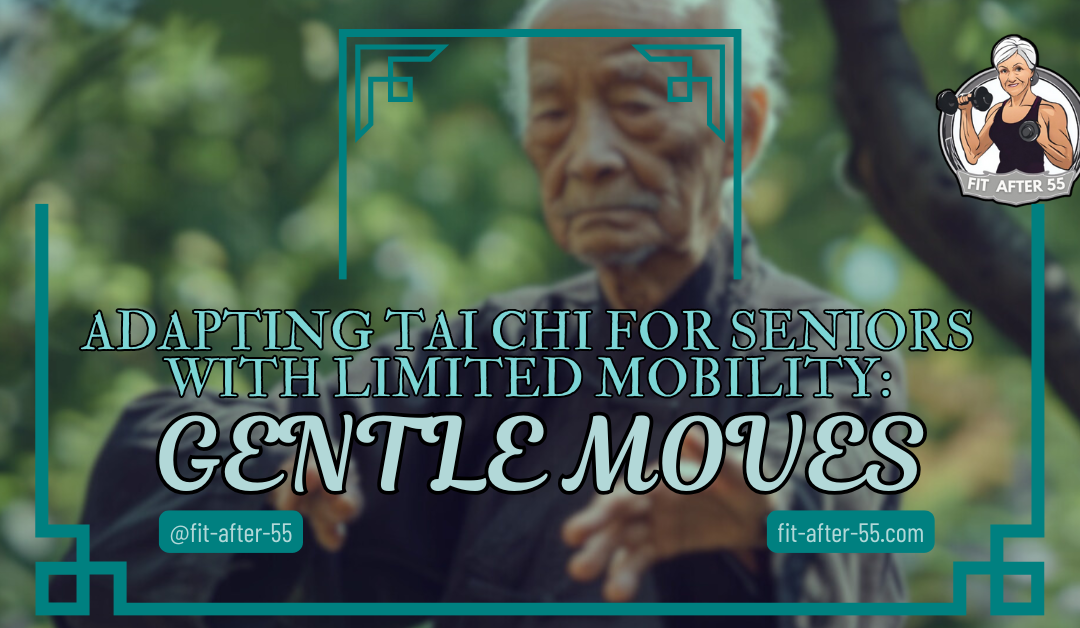Adapting Tai Chi for seniors with limited mobility offers a gentle yet powerful way to enhance physical and mental well-being. This ancient practice, known for its slow, flowing movements, can be easily modified to accommodate those with mobility challenges. Whether sitting or standing, Tai Chi’s gentle moves promote balance, flexibility, and relaxation, making it an ideal exercise for seniors seeking to stay active without straining their bodies.
Finding safe and effective exercises can be difficult for seniors with limited mobility. That’s where Tai Chi shines. In this article, we’ll explore how simple adjustments can make Tai Chi accessible to all, even if you have difficulty standing or moving with ease. Stay with us as we guide you through gentle moves that can help improve your strength, reduce stress, and boost your overall well-being.
Gentle Tai Chi for Seniors: Stay Active and Healthy with Adapted Movements
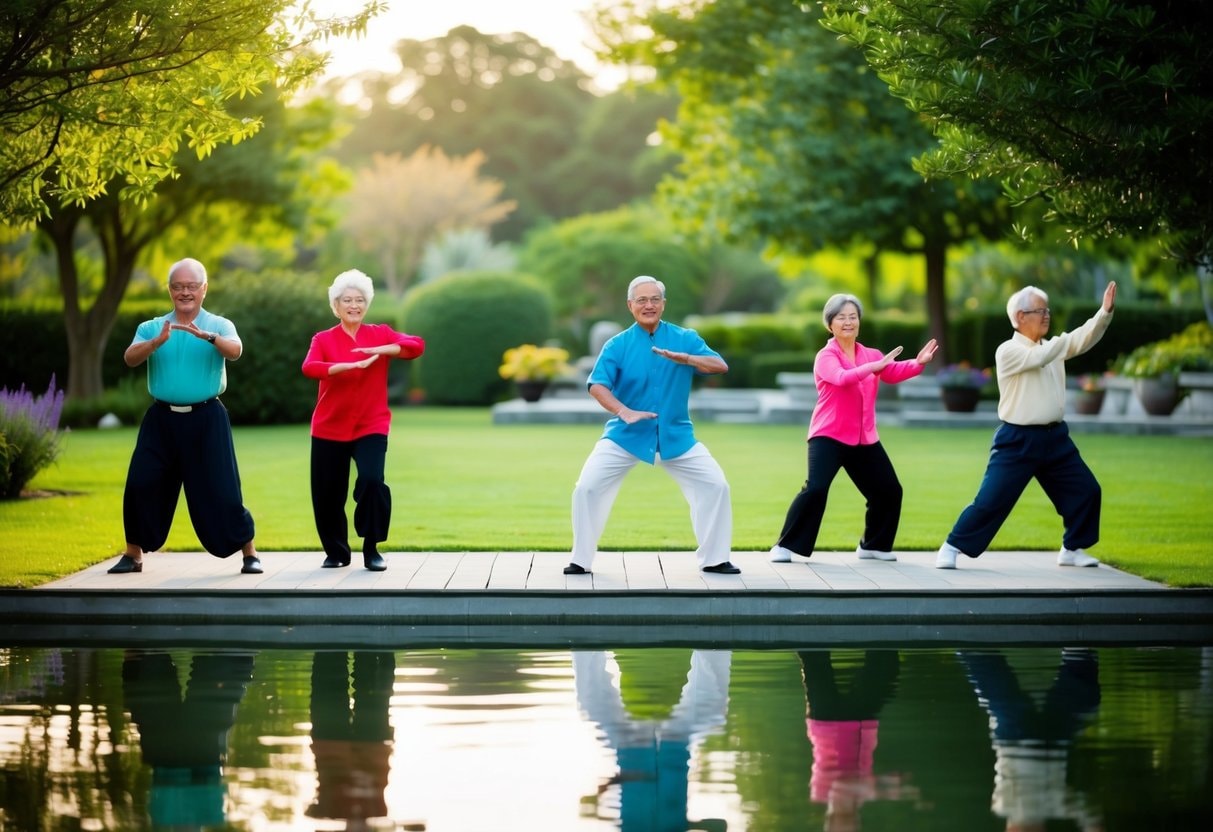
Adapting Tai Chi for seniors with limited mobility allows individuals to stay active and healthy while enjoying the benefits of this gentle exercise. Even with mobility challenges, seniors can still embrace this ancient practice and experience its positive effects.
Seniors with limited mobility can improve flexibility, balance, and well-being through adapted Tai Chi. You might think Tai Chi is only for those who can stand and move freely, but that’s not true. There are many ways to modify Tai Chi movements to fit your needs.
For example, you can practice seated Tai Chi in a chair, focusing on upper body movements and breathing exercises. This way, you can still gain the benefits of Tai Chi without putting strain on your legs or worrying about balance issues.
By adapting Tai Chi to your abilities, you can improve your strength, flexibility, and mental clarity. It’s a great way to stay active and connected with your body, regardless of physical limitations. With the right guidance and modifications, Tai Chi can become an enjoyable part of your daily routine.
Key Takeaways
- Tai Chi can be modified for seniors with limited mobility, incorporating seated exercises and gentle movements to enhance participation.
- Regular practice of adapted Tai Chi improves flexibility, balance, and strength, helping seniors maintain their physical well-being.
- Engaging in Tai Chi promotes mindfulness, reduces stress, and can enhance cognitive function, contributing to better mental health.
- Tai Chi can be practiced at any age or fitness level, making it an inclusive option for seniors, regardless of mobility challenges.
- Joining Tai Chi classes fosters social interaction and support among seniors, enriching their quality of life and creating a sense of belonging.
Benefits of Tai Chi for Seniors
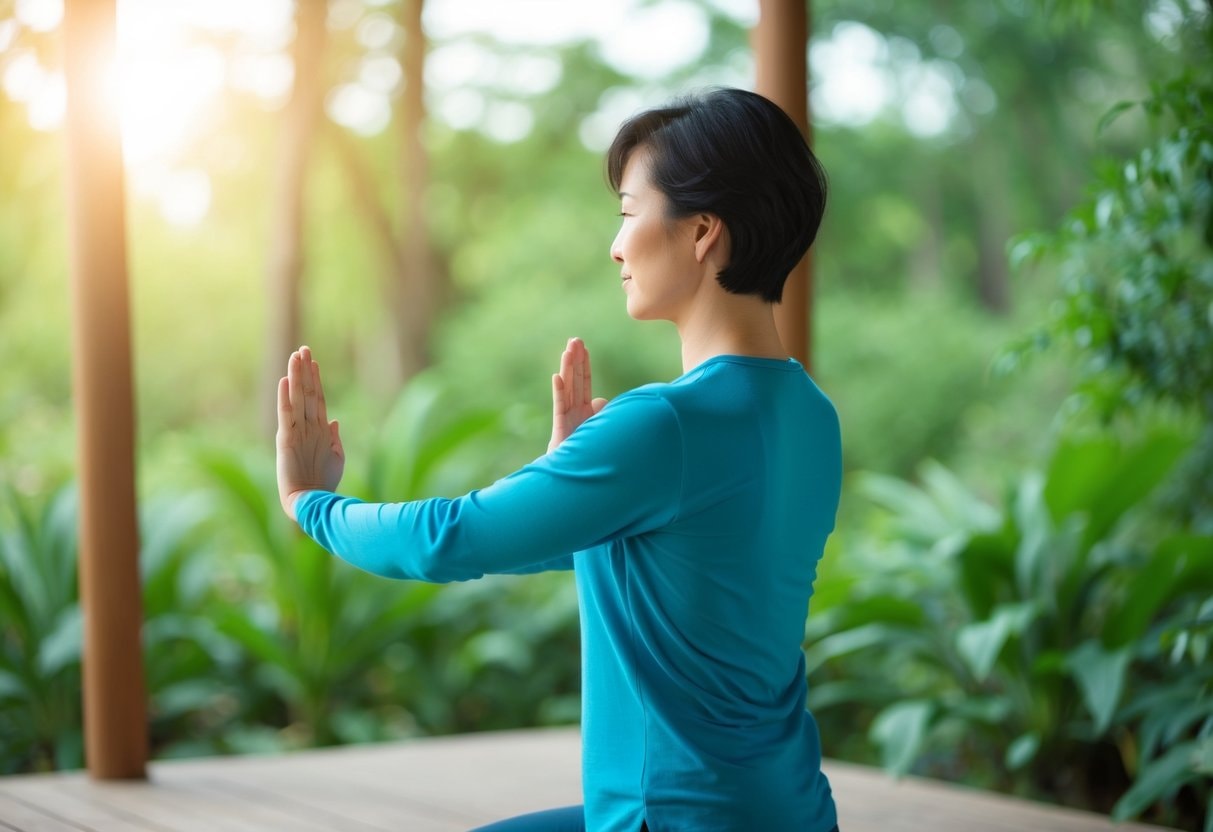
Adapting Tai Chi for seniors with limited mobility offers many advantages for older adults. It can help you move better, think clearer, and feel happier. Let’s look at how this gentle exercise can improve your health and life.
Enhancing Mobility and Flexibility
Tai Chi can make your body more limber and steady. It uses slow, flowing moves that stretch your muscles and joints. This can help you:
- Walk more easily
- Reach for things better.
- Bend and move with less pain.
Many seniors find that Tai Chi improves their balance, too. This is great news because good balance means you’re less likely to fall. In fact, Tai Chi is so good for balance that it can lower your risk of falling more than other exercises.
Even if you can’t stand for long, you can still do Tai Chi. There are seated versions that let you enjoy the benefits while sitting down.
Improving Cognitive Function and Reducing Stress
Tai Chi isn’t just good for your body – it’s great for your mind, too. When you do Tai Chi, you:
- Focus on your breathing
- Pay attention to your movements.
- Clear your mind of worries.
This kind of focus can sharpen your thinking skills. Some studies show that Tai Chi might even help slow down memory loss in older adults. Tai Chi is also a great stress-buster. The calm, flowing moves can help you feel more relaxed. Many people say they sleep better after starting Tai Chi. Better sleep means less stress and a clearer mind.
Strengthening Muscles and Core Stability
You might not think of Tai Chi as strength training, but it can make you stronger. The slow, controlled movements work your muscles in a gentle way. This can help you:
- Build stronger legs
- Improve your posture
- Boost your core strength.
Having a strong core is really important. It helps you stand up straight and move with more confidence. Tai Chi works your core muscles without putting too much strain on your body. Even if you’re not very strong now, Tai Chi can help. You can start with simple moves and build up over time. Your instructor can show you how to adjust the exercises to fit your needs.
Promoting Better Quality of Life
Tai Chi can make your daily life better in many ways. It’s not just about physical health – it’s about feeling good overall. Here are some ways Tai Chi can boost your quality of life:
- It can help you make new friends in class
- You might feel more confident in your body.
- The calm focus can improve your mood.
Many seniors say they feel more energetic after starting Tai Chi. This extra energy can help you enjoy your hobbies and time with family more. Tai Chi is also easy to fit into your life. You can do it almost anywhere, and you don’t need special equipment. This makes it a great choice for staying active as you age.
Understanding Limited Mobility
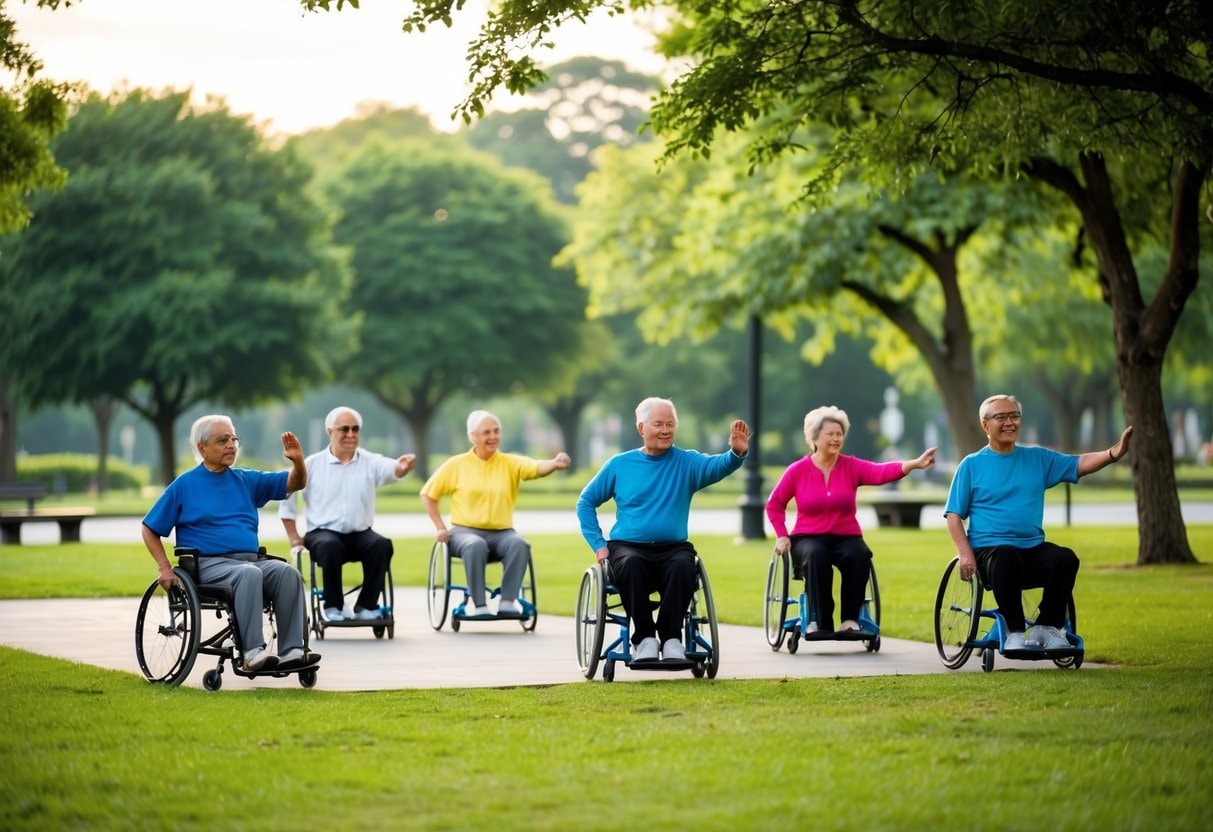
Limited mobility can make daily activities challenging for seniors. It affects how you move and what you can do. Let’s look at why this happens and how adapting Tai Chi for seniors with limited mobility can help you figure out what you can still do.
Common Causes of Mobility Issues in Seniors
As you get older, your body changes. This can make moving around harder. Here are some reasons why:
- Arthritis: Your joints may hurt and feel stiff.
- Weak Muscles: You might not be as strong as you used to be.
- Balance Problems: It can be scary to walk if you feel unsteady.
- Vision Issues: Not seeing well can make you less sure of your steps.
Some health problems can also limit how you move. Strokes, Parkinson’s disease, and injuries from falls are common causes. These issues can make it tough to do things you once found easy.
Assessment of Mobility Range and Abilities
Knowing what you can do is important. A doctor or physical therapist can help figure this out. They’ll look at:
- How far you can reach
- How well you can stand up from sitting
- Your balance while standing still and walking
- The strength in your arms and legs
They might ask you to do simple tasks. This helps them see what’s easy or hard for them. They’ll also ask about pain or fear of falling. This info helps create a plan just for you. With this knowledge, you can find ways to stay active that work for your body. It’s all about finding what you can do, not focusing on what you can’t.
Adapting Tai Chi Principles for Limited Mobility
Adapting Tai Chi for seniors with limited mobility allows individuals to still enjoy the benefits of this ancient practice. Through seated exercises, gentle movements, and focused breathing techniques, Tai Chi can be modified to suit seniors with mobility challenges.
Fundamentals of Tai Chi in a Seated Position
Seated Tai Chi allows you to practice safely and comfortably. Start by sitting tall in a sturdy chair with your feet flat on the floor. Focus on your posture and keep your spine straight. Relax your shoulders and let your arms rest gently at your sides. Try these simple moves:
- Arm Circles: Slowly rotate your arms in small circles
- Gentle Twists: Turn your upper body side to side
- Leg Lifts: Raise and lower your legs one at a time
Remember to move slowly and smoothly. Don’t push yourself too hard. Listen to your body and stop if you feel pain.
Integrating Qigong for Gentle Movements
Qigong, a practice related to Tai Chi, offers gentle exercises perfect for those with limited mobility. It focuses on slow, flowing movements combined with deep breathing. Try this simple Qigong exercise:
- Sit comfortably and raise your hands to chest level
- Imagine holding a ball of energy
- Slowly push your hands forward, then pull them back
Repeat this movement 5-10 times. Feel the energy flowing through your arms and hands. Qigong can help improve your strength and flexibility. It’s also great for reducing stress and boosting your mood.
The Role of Deep Breathing in Movement
Deep breathing is a key part of Tai Chi. It helps you relax and focus your mind. When you combine deep breathing with gentle movements, you can enhance the benefits of your practice. Try this breathing exercise:
- Sit comfortably and close your eyes
- Breathe in slowly through your nose for 4 counts
- Hold for 2 counts
- Exhale slowly through your mouth for 6 counts
Do this for 5-10 breaths. As you breathe, imagine tension leaving your body with each exhale. Remember, the goal is to feel calm and centered. Take your time and enjoy the peaceful sensations.
Watch this video on Tai Chi for Individuals with Limited Mobility.
By: ACC Senior Services
Designing a Tai Chi Program for Seniors
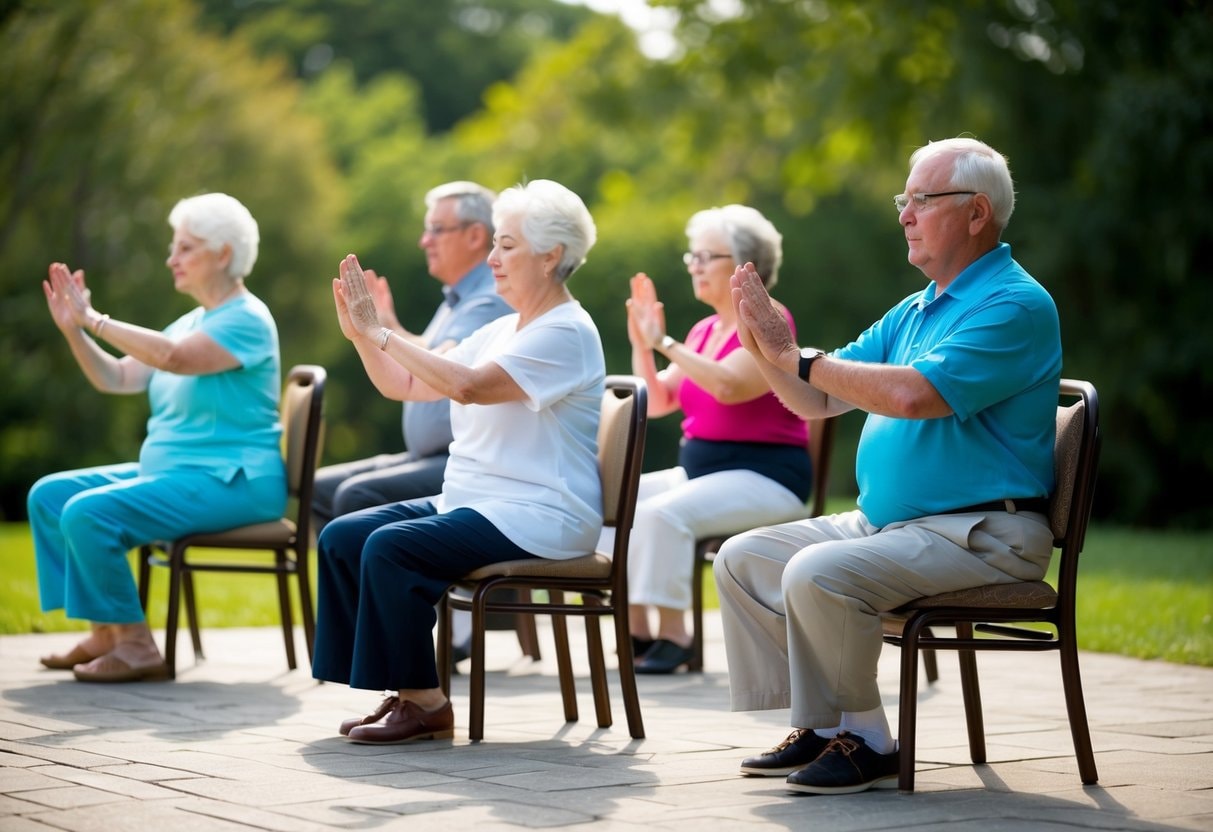
Creating a tailored Tai Chi program for seniors involves adapting Tai Chi for seniors with limited mobility by customizing exercises, using helpful tools, and setting achievable targets. This approach ensures safe and effective practice for older adults with varying abilities.
Tailoring Exercises to Individual Needs
When designing Tai Chi for seniors, it’s crucial to adapt moves to fit each person’s abilities. You can start with seated Tai Chi if standing is hard. This helps build strength and balance safely. As you get stronger, you can try standing exercises with support.
Use a chair or wall for balance at first. Slow, gentle movements are key. Focus on breathing and smooth transitions between poses. Remember, everyone’s different. What works for one person might not suit another. Pay attention to your body’s feelings, and don’t push too hard.
Incorporating Equipment and Aids
Using the right tools can make Tai Chi easier and safer for you. A sturdy chair is great for seated Tai Chi. It gives you support and helps with balance. Other helpful items include:
- Resistance bands for strength moves
- Softballs for hand exercises
- Non-slip mats for better grip
If you have trouble with certain moves, try using mobility aids. A cane or walker can help you feel more stable during standing exercises. Always choose equipment that feels comfortable and safe for you. Don’t hesitate to ask your instructor for advice on what might work best.
Setting Realistic Goals and Progress Tracking
It’s important to set goals that match your current health and stamina. Start small and build up slowly. Your first goal might be to practice for 10 minutes a day, three times a week. Keep a simple log of your Tai Chi sessions. Write down:
- How long you practiced
- How did you felt during and after
- Any new moves you tried
This helps you see your progress over time. It’s okay if some days feel harder than others. The key is to keep going at your own pace. Celebrate small wins along the way. Maybe you can now hold a pose longer or feel more balanced. These are all signs that you’re improving your health and well-being through Tai Chi.
Did You Know?
Some suitable Tai Chi styles for seniors with mobility issues include the Yang and Chen styles. Yang-style Tai Chi is often recommended for seniors due to its gentle, flowing movements that are easy on the joints. Chen’s style can also work well when modified for those with limited mobility.
Safety Measures and Considerations
Staying safe while adapting Tai Chi for seniors with limited mobility is key. You need to know the risks and set up a good space to practice in. Here are some important things to keep in mind:
Understanding and Managing Risks
When you start Tai Chi, talk to your doctor first. This is extra important if you have health issues or disabilities. Pay attention to how your body feels. If something hurts, stop and rest. Don’t push yourself too hard.
Start slow and build up over time. Focus on moves that work for your strength level. If you can’t stand for long, try seated Tai Chi. Many moves can be done sitting down. Use a chair or wall for support if you need it. This helps prevent falls. Wear comfy clothes and shoes with a good grip. Avoid loose clothing that might trip you up.
Creating a Safe Practice Environment
Pick a quiet spot with enough room to move. Clear the area of things you might bump into. Make sure the floor isn’t slippery. If you’re outside, find a flat surface away from traffic. Good lighting is a must. You need to see clearly to make the moves right. Keep water close by to stay hydrated. Take breaks when you need to.
If you’re doing Tai Chi at home, have a phone nearby in case of emergency. It’s even better to practice with a friend or in a group. This way, someone can help if needed. Use props like chairs or balance bars if they help you feel safer. Your teacher can show you how to use these correctly.
Resources and Support for Practitioners
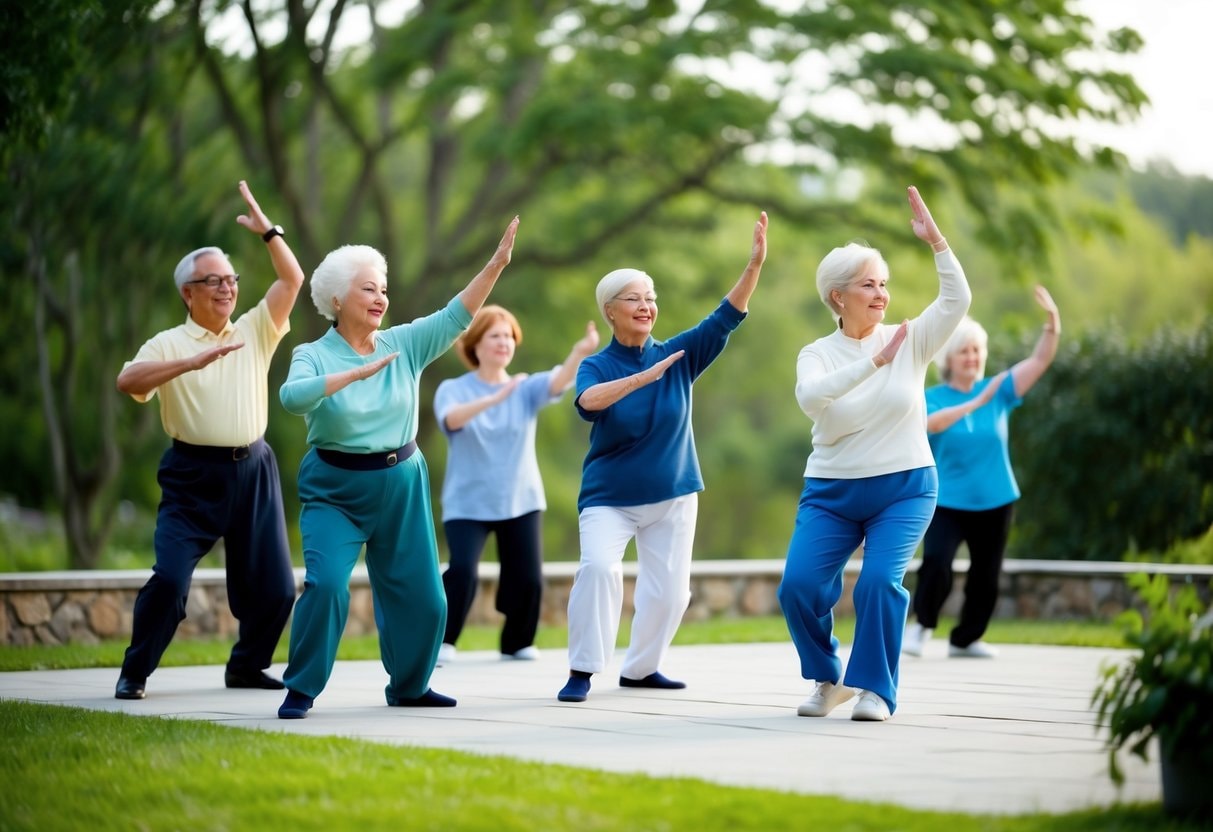
Finding the right resources and support can make your Tai Chi journey more enjoyable and effective, especially when adapting Tai Chi for seniors with limited mobility. You’ll discover various options to help you practice and improve, whether in person or online.
Community Classes and Social Support
Local community centers often offer Tai Chi classes for seniors. These classes provide a chance to learn proper techniques and meet others with similar interests. You’ll find support and motivation from your classmates, which can boost your stamina and quality of life.
Many senior living facilities also host Tai Chi sessions. These are great for building a routine and staying active. You might even make new friends who share your passion for wellness. Look for specialized classes that focus on seated or modified Tai Chi moves. These are perfect if you have limited mobility.
Online Platforms and Accessibility
The internet offers many resources for practicing Tai Chi at home. You can find video tutorials, live-streamed classes, and apps designed for seniors. YouTube has free Tai Chi videos for all skill levels. Many are tailored for those with mobility issues.
Paid platforms like Udemy or Skillshare offer structured courses. These often include detailed instructions and progress tracking. Some apps provide daily Tai Chi routines. They can help you stay consistent with your practice.
Professional Guidance and Instruction
Working with a certified Tai Chi instructor can greatly improve your form and technique. Look for instructors with experience teaching seniors or those with limited mobility. They’ll know how to modify moves safely.
Many instructors offer private lessons. These allow for personalized attention and customized routines. Some physical therapy clinics incorporate Tai Chi into their programs. This can be helpful if you’re recovering from an injury or managing a chronic condition.
Watch this video on Gentle Range of Motion Chair Exercises for Seniors.
By: Improved Health
Embracing Movement: The Transformative Benefits of Tai Chi for Seniors with Limited Mobility
Adapting Tai Chi for seniors with limited mobility opens the door to a gentle yet transformative exercise experience that can enhance physical and mental well-being. Through simple modifications, seniors can participate in this ancient practice, enjoying its numerous benefits while ensuring their safety and comfort. The slow, flowing movements promote balance, flexibility, and relaxation, making Tai Chi an ideal choice for those looking to stay active without undue strain.
Moreover, incorporating adapted Tai Chi into a senior’s routine can lead to significant improvements in strength, stress reduction, and overall quality of life. By embracing these gentle moves, seniors not only connect with their bodies but also foster a sense of community and purpose. With the right guidance and resources, anyone can experience the joy of Tai Chi, regardless of mobility limitations.
Frequently Asked Questions
Can Tai Chi Be Practiced While Sitting or Using a Wheelchair?
Yes, Tai Chi can be adapted for seated practice. Sitting Tai Chi allows you to enjoy the benefits of this exercise from a chair or wheelchair. You can do many upper-body movements and focus on breathing and mindfulness.
What Are the Health Benefits of Tai Chi for Older Adults?
Tai Chi offers many health perks for seniors. It can improve your balance, flexibility, and strength. The slow movements are great for easing joint pain. Tai Chi also helps reduce stress and boost your mood.
Are There Any Modifications to Traditional Tai Chi Exercises for Those With Limited Motion?
You can modify Tai Chi moves to fit your abilities. Try smaller movements or focus on certain body parts. Use a chair for support if needed. Your instructor can help adjust exercises to work for you.
How Does Tai Chi Contribute to the Health Promotion of Seniors?
Tai Chi promotes overall wellness in older adults. It helps prevent falls by improving balance. The gentle exercise keeps you active and mobile. Tai Chi also boosts mental health through mindfulness and social interaction.
Are There Any Potential Drawbacks to Practicing Tai Chi for Individuals With Mobility Limitations?
Tai Chi is generally safe, but there are a few things to watch out for. Make sure you don’t overexert yourself. Start slowly and listen to your body. Talk to your doctor before beginning, especially if you have severe mobility issues or health concerns.
Refresh Your Fitness Journey Beyond 55!
Hello, fitness aficionados! Explore the vital components for maintaining an active and healthy lifestyle with Fit After 55! Whether you’re an experienced athlete or just beginning, our platform is your ultimate resource for comprehensive wellness. From creating achievable goals to tracking your progress, we are here to support you in redefining success after 55. Visit our website and connect with us on Facebook to discover your true potential with Fit After 55!

